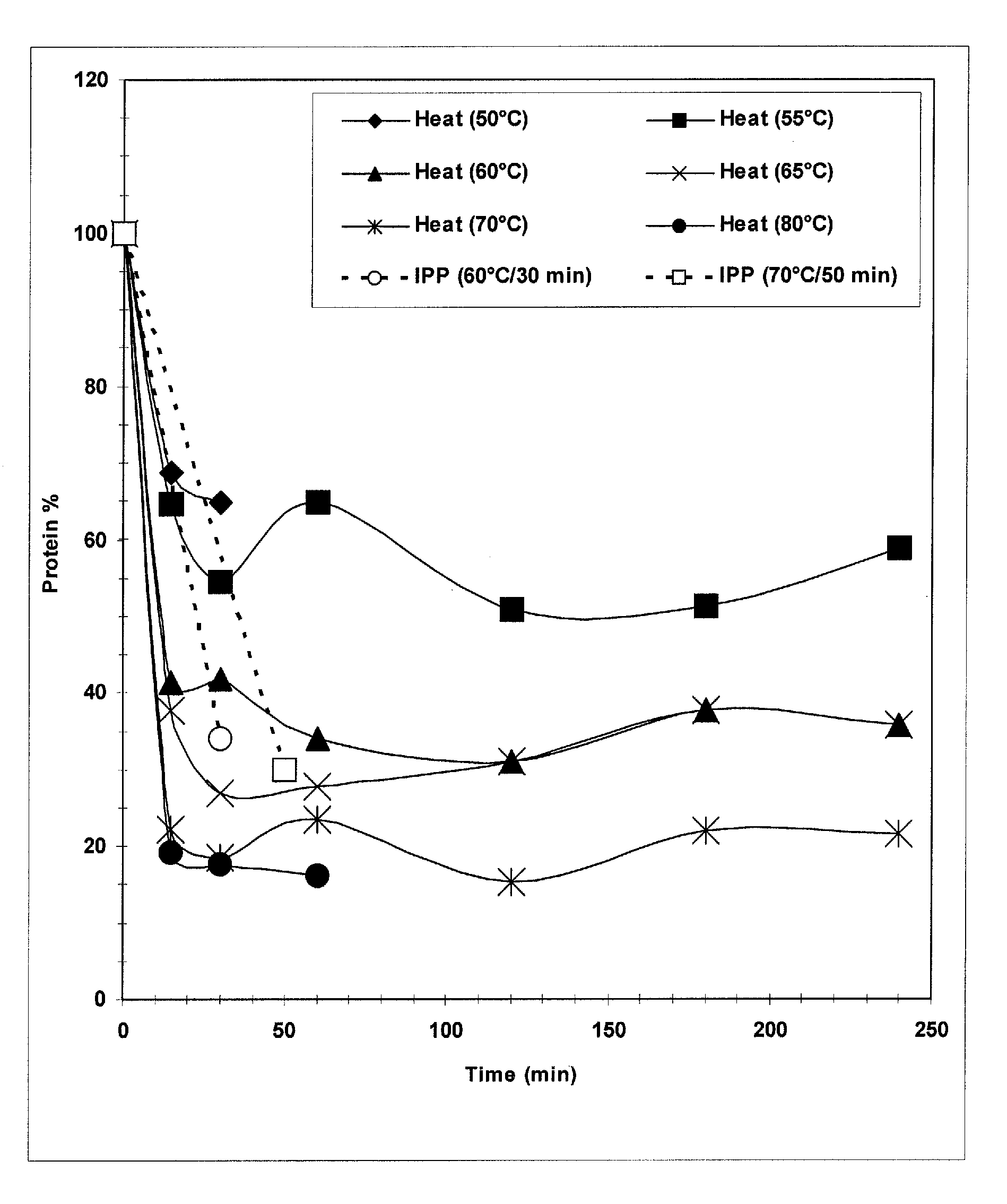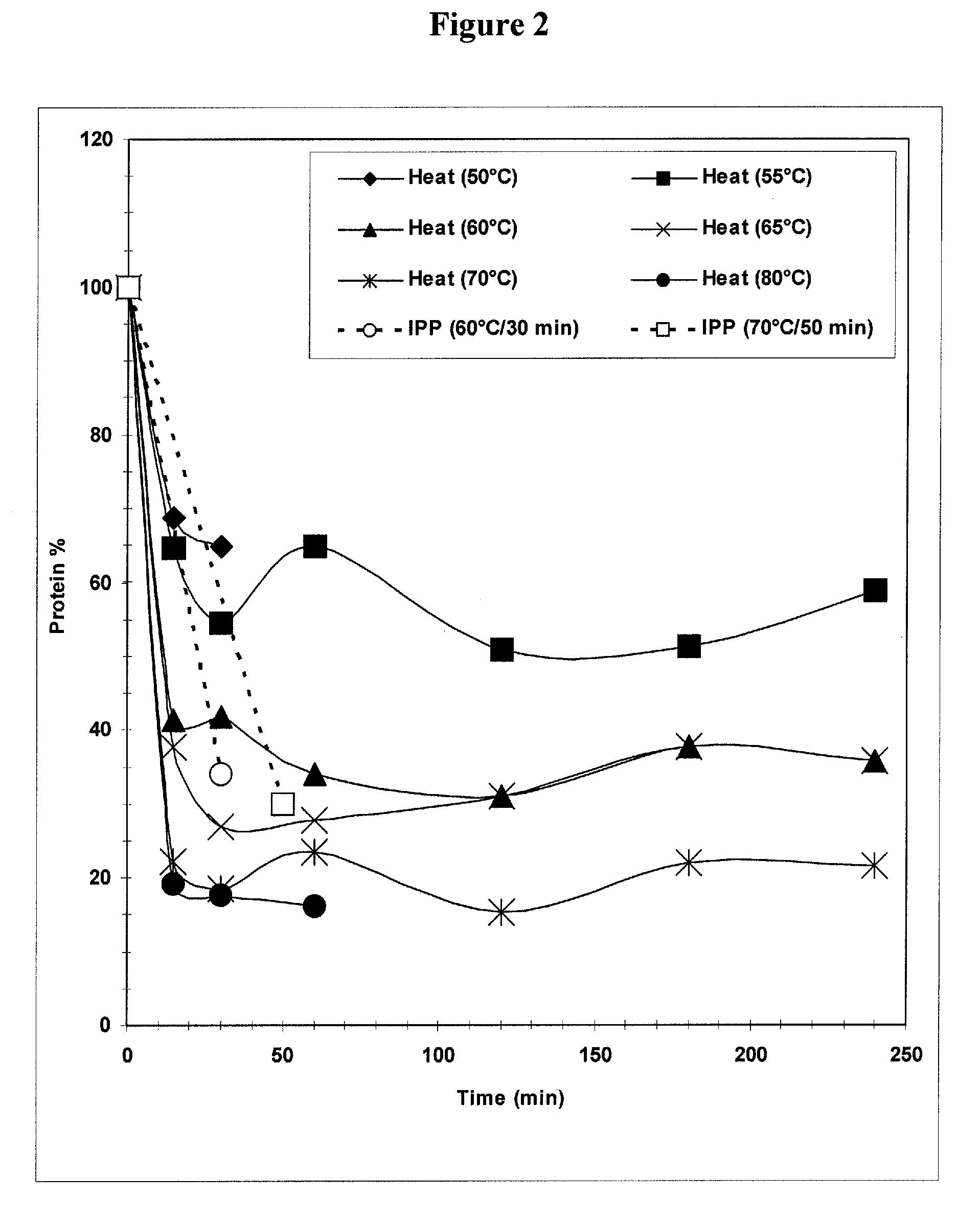Methods for the separation of streptococcus pneumoniae type 3 polysaccharides
a technology of streptococcus pneumoniae and polysaccharide, which is applied in the direction of antibacterial agents, drug compositions, antibacterial medical ingredients, etc., can solve the problems of high burden of contaminating soluble proteins, run failures, and difficulty in removing soluble proteins to meet purified polysaccharide specifications, so as to improve filterability, and reduce or remove protein impurities
- Summary
- Abstract
- Description
- Claims
- Application Information
AI Technical Summary
Benefits of technology
Problems solved by technology
Method used
Image
Examples
example 1
Heating Step
[0032] Implementing a heating step for Streptococcus pneumoniae serotype 3 recovery was driven by a need to decrease the protein load before purification steps. Batches of purified polysaccharide were prone to batch failures due to residual protein levels above the set specification level of 5% w / w protein / polysaccharide. The following laboratory studies were therefore performed to characterize the effectiveness and ranges for use of a heating step in the purification and recovery of Streptococcus pneumoniae serotype 3. The goal for including this heating step was to produce a reduction in protein levels while maintaining high polysaccharide levels.
[0033] In the laboratory, fermentation cellular lysate material obtained from pilot plant runs was aliquoted into Falcon™ tubes (BD Biosciences, Bedford, Mass.) and heated in water baths to various temperatures. Temperatures studied ranged from 50° C. to 80° C., with hold times from 15 minutes to 240 minutes. Control samples...
example 2
pH Adjustment and Filtration Step
[0045] Traditional filtration for Streptococcus pneumoniae polysaccharides included in the Prevnar® vaccine has involved continuous centrifugation of cellular lysates followed by depth filtration and membrane filtration. As described above, Streptococcus pneumoniae Type 3 is a large polysaccharide that is viscous in solution and fails to filter well under traditional processing conditions. Because of these failures, work was conducted to modify the filtration characteristics of this polysaccharide. Studies were therefore conducted to identify means for improving the filterability of serotype 3 polysaccharide solutions.
[0046] Using pH as a variable, an initial study of the impact of pH on protein removal and subsequent filterability of serotype 3 lysate solutions across 25 mm diameter 0.45 μm HT Tuffryn® syringe filters (Pall Life Sciences, Anne Arbor, Mich.) was conducted in the laboratory. Prior to centrifugation, samples of fermentation lysates o...
PUM
| Property | Measurement | Unit |
|---|---|---|
| Temperature | aaaaa | aaaaa |
| Temperature | aaaaa | aaaaa |
| Temperature | aaaaa | aaaaa |
Abstract
Description
Claims
Application Information
 Login to View More
Login to View More - R&D
- Intellectual Property
- Life Sciences
- Materials
- Tech Scout
- Unparalleled Data Quality
- Higher Quality Content
- 60% Fewer Hallucinations
Browse by: Latest US Patents, China's latest patents, Technical Efficacy Thesaurus, Application Domain, Technology Topic, Popular Technical Reports.
© 2025 PatSnap. All rights reserved.Legal|Privacy policy|Modern Slavery Act Transparency Statement|Sitemap|About US| Contact US: help@patsnap.com



